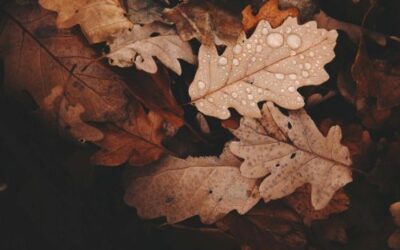As summer comes to an end and cooler temperatures approach, it’s time to start thinking about preparing your lawn for fall. Proper lawn care during this transitional season is crucial to ensure your yard remains healthy and vibrant through the winter and into the next growing season. Here are some essential tips to help you get your lawn ready for fall.
1. Aerate the Soil
Aerating your lawn involves perforating the soil with small holes to allow air, water, and nutrients to penetrate the grass roots. This process helps alleviate soil compaction, which can hinder the proper growth of grass. Aeration is especially beneficial in the fall as it prepares the lawn for overseeding and fertilization.
How to Aerate:
- Use a lawn aerator, which can be either a manual tool or a machine available for rent.
- For best results, aerate when the soil is moist but not waterlogged.
- Focus on heavily trafficked areas and places where the soil is compacted.
2. Overseed Your Lawn
Overseeding is the process of planting new grass seed over existing turf. This helps fill in bare spots, improve the density of your lawn, and enhance its overall appearance. Fall is an ideal time for overseeding because the cooler temperatures and increased rainfall create optimal conditions for seed germination.
Steps for Overseeding:
- Choose a high-quality grass seed that is suitable for your region and lawn type.
- Mow the lawn shorter than usual and remove any clippings to provide better seed-to-soil contact.
- Spread the seed evenly across the lawn using a broadcast spreader.
- Water the lawn lightly but frequently to keep the soil consistently moist until the new grass is established.
3. Fertilize for Root Growth
Fall fertilization is crucial for promoting strong root growth, which helps grass survive the winter and thrive in the spring. Using a fertilizer high in phosphorus encourages root development and prepares the grass for the colder months.
Fertilizing Tips:
- Select a fertilizer with a balanced ratio of nutrients, focusing on phosphorus for root growth.
- Apply the fertilizer according to the manufacturer’s instructions, typically in early to mid-fall.
- Water the lawn after fertilizing to help the nutrients penetrate the soil.
4. Continue Mowing
Even though growth slows down in the fall, it’s important to continue mowing your lawn. Regular mowing helps maintain the grass at an optimal height and prevents diseases associated with overly long grass.
Mowing Guidelines:
- Keep the mower blade sharp to ensure clean cuts.
- Gradually lower the mowing height as the season progresses, aiming for about 2.5 to 3 inches by the final mow of the season.
- Avoid cutting more than one-third of the grass height in a single mowing session.
5. Rake and Remove Leaves
Fallen leaves can block sunlight and trap moisture, creating an environment conducive to diseases and pests. Regularly raking and removing leaves from your lawn helps maintain healthy grass.
Leaf Removal Tips:
- Use a leaf rake, leaf blower, or mulching mower to collect and remove leaves.
- Consider composting the leaves to create nutrient-rich mulch for your garden.
- Rake leaves frequently, especially after heavy leaf fall.
6. Control Weeds
Weeds can compete with grass for nutrients and water, weakening your lawn. Fall is an excellent time to control broadleaf weeds as they actively absorb nutrients in preparation for winter.
Weed Control Steps:
- Identify the weeds present in your lawn and choose an appropriate herbicide.
- Apply the herbicide according to the label instructions, targeting weeds directly.
- Monitor the lawn for any new weed growth and address it promptly.
7. Adjust Watering Schedule
As temperatures cool down, your lawn’s water needs will decrease. Adjust your watering schedule to prevent overwatering and promote deep root growth.
Watering Tips:
- Water deeply but less frequently, aiming for about 1 inch of water per week.
- Water in the early morning to minimize evaporation and fungal growth.
- Reduce watering gradually as fall progresses and rainfall increases.
8. Prepare for Winter
Finally, take steps to prepare your lawn for the winter months. This includes proper irrigation, pest control, and potentially a final application of a slow-release fertilizer to provide nutrients throughout the winter.
Winter Preparation:
- Ensure your irrigation system is working correctly and consider winterizing it to prevent damage.
- Inspect for pests and treat any infestations promptly.
- Apply a slow-release winter fertilizer if recommended for your grass type.
By following these steps, you can ensure your lawn remains healthy and resilient through the fall and into the winter.
For those in the Charlottesville area looking for professional lawn care services, Jack’s Lawncare & Landscape offers expert assistance to help you prepare your lawn for fall. With a commitment to quality and customer satisfaction, we are here to provide the knowledge and services needed to maintain a beautiful, healthy lawn year-round. Contact us at Jack’s Lawncare & Landscape today to schedule a consultation and take the first step toward a thriving fall lawn.



